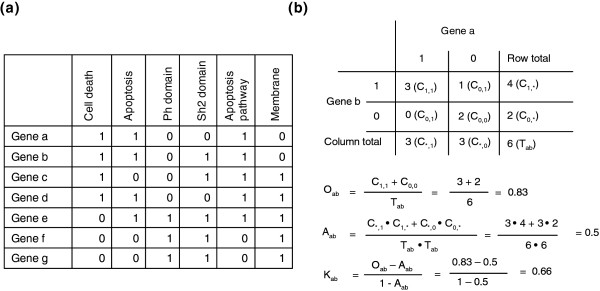Figure 2.
A hypothetical example of detecting gene-gene functional relationships by kappa statistics. (a) The all-redundant and structured terms are broken into 'independent' terms in a flat linear collection. Each gene associates with some of the annotation term collection so that a gene-annotation matrix can be built in a binary format, where 1 represents a positive match for the particular gene-term and 0 represents the unknown. Thus, each gene has a unique profile of annotation terms represented by a combination of 1 s and 0 s. (b) For a particular example of genes a and b, a contingency table was constructed for kappa statistics calculation. The higher kappa score (0.66) indicates that genes a and b are in considerable agreement, more so than by random chance. By flipping the table 90 degrees, the kappa score of term-term can be achieved, based on the agreement of common genes (not shown). For more information see Additional data files 11 and 12.

